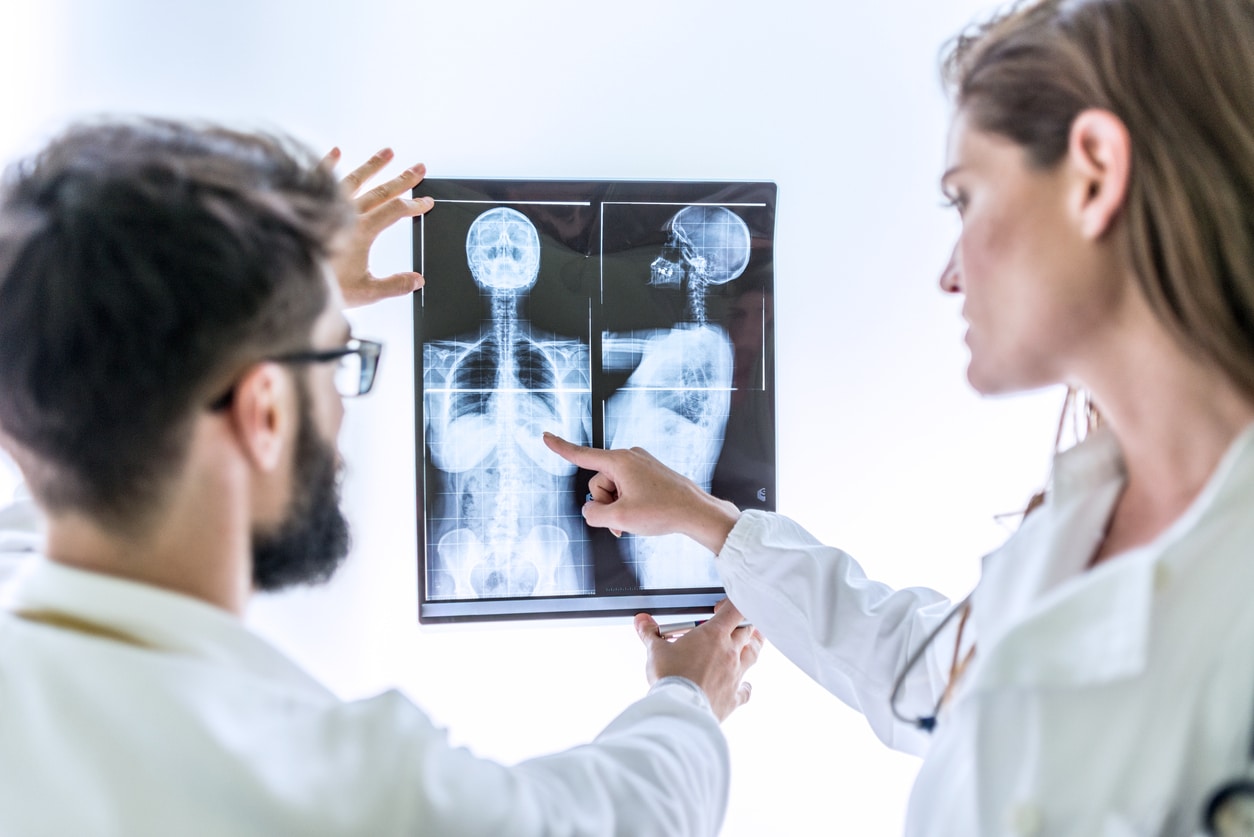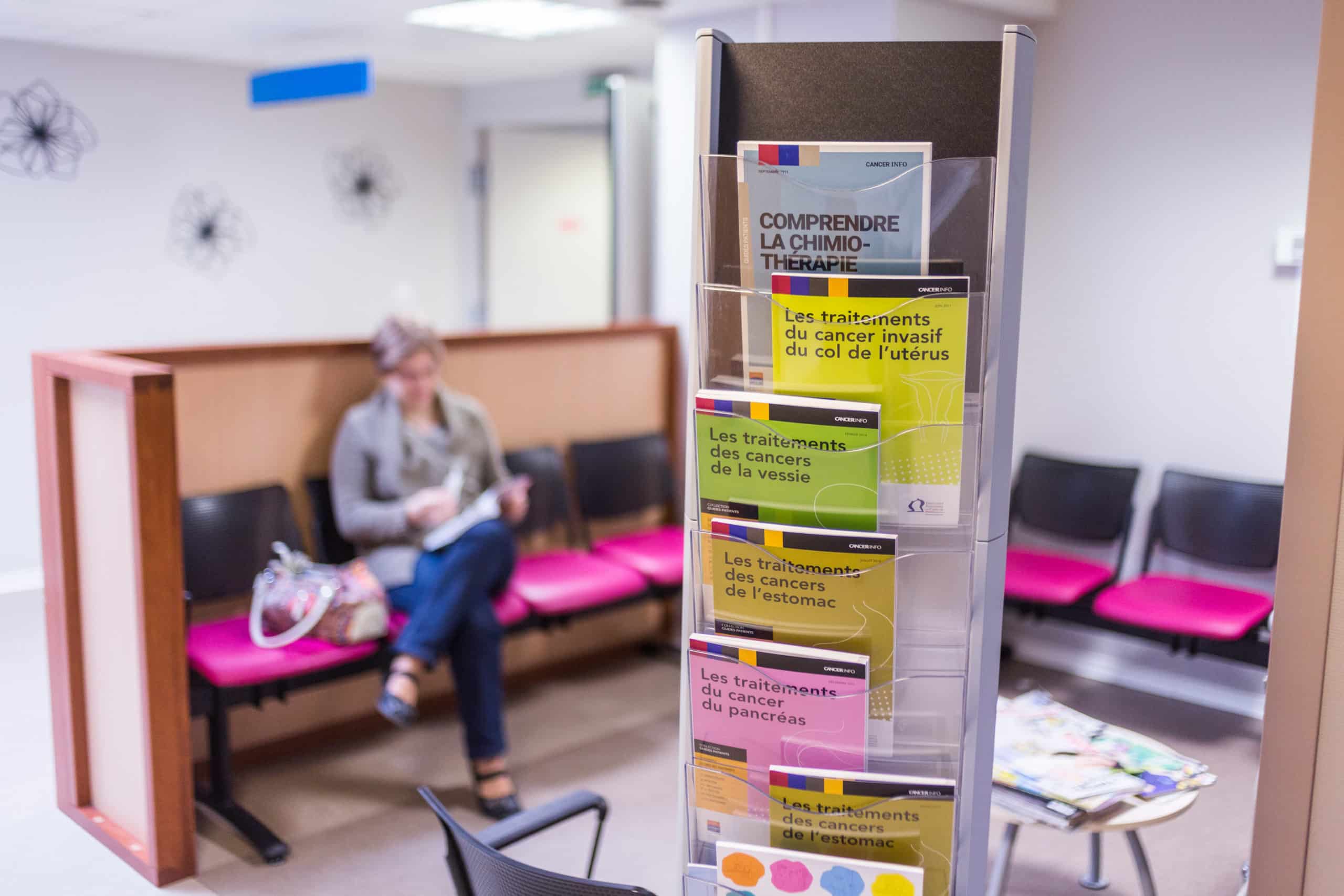Patient care pathway
Discover the steps of your radiotherapy treatment at CeRAC in Angoulême.
Your Personalized Treatment Strategy (PTS)
For each patient, a Personalized Treatment Strategy (aka PPS in French for “Plan Personnalisé de Soins”) is set up during a Multidisciplinary Team Meeting. Your radiotherapist will explained your PTS to you during your medical consultation.
Your pathway follows a precise protocol. Here are the main steps.
1 – Multidisciplinary Team Meeting (MDT)
Cancer care involves numerous medical specialties. Each patient’s case is discussed during a meeting known as the Multidisciplinary Team Meeting (MDT, aka RCP in French for “Réunion de Concertation Pluridisciplinaire”).
Weekly MDTs focus on specific specialties (Urology, Gynecology, Pulmonology, etc.). Depending on the theme, relevant speciaslits are involved : oncologists, pathologists, radiologists, nuclear medicine physicians…
Based on national guidelines, the medical team discusses the proposed cancer care strategy for each patient. The collaborative discussion between various specialists is highly beneficial to propose the best treatment strategy for each patient.

2 – First medical consultation with the Oncologist-Radiotherapist
Your first medical consultation with your doctor is a specific one : the announcement consultation. This is where the treatment strategy is discussed with you.
During this meeting, your doctor will explain the characteristics of your disease to you, as well as the proposed treatments, the expected benefits, and potential side effects.
This consultation is crucial. We recommend that you bring a family member or a close friend to attend. It can be helpful for you to be accompanied by a loved one. Take your time to ask any question to make sure you have the best understanding possible.
Once you agree to the proposed treatement strategy, it will be formalized in a document called the Personalized Treatment Program (PTP).
This document covers the dates of the treatments, their durations, and the contact details of the healthcare team members. The PTP may evolve during your treatment.

3 – Supportive Care Time (SCT)
The paramedical consultation aims to provide information, support, and care for both the patient and their companion.
It is a dedicated time with a radiotherapy technologist who will go with you over the information provided by the doctor. They may adress the more technical aspects of your treatment. This Supportive Care Time is called in French “Temps d’Accompagnement Soignant” or TAS.
This meeting is focused on listening to your insecurites and answering any other question you may have. We will also identify your needs and guide you, if necessary, to other healthcare professionals (Psychologist, Dietitian, Hypnotherapist, etc.).
If requested, a follow-up consultation with a technologist can be scheduled during your treatment (with or without a companion) to address any concerns. You will be referred back to your referring doctor if needed.

4 – Your treatment preparation
Your oncologist-radiotherapist will prescribe the appropriate type of radiotherapy. They work closely with other doctors and healthcare professionals. Several steps are required to prepare your treatment.
Positioning CT scan
During this preparation phase, we will determine your position for future treatment sessions.
Positionning devices depend on the treatment site and technique. They can be used to limit movements during treatment sessions to ensure accuracy. Your positionning CT scan provides information about your anatomy, hence your doctor can precisely define target volumes and healthy tissues which require preservation.
This scan is not a diagnostic one and does not provide results on your condition.
Dosimetry : the treatment planning phase
Using the positionning CT scan, the medical team (your doctor, physicists and dosimetrists) will precisely determine which areas need to be treated and which ones need to be protected. They use a dedicated treatement planning software : this is where for example the irradiation field, the numbers of beams and the number of sessions are set. All this parameters will lead your treatment.
This phase takes approximately 15 days, which explains partly the waiting time between your CT scan and the start of your treatment.
5 – Your treatment
First session
You will be contacted by phone to be given your first treatment appointment.
This session will be longer than the others since it begins with a mandatory verification step of all your treatment parameters.
This session will also allow you to become familiar with the treatment machine.
Your positionning will be the same as determined during your CT scan.
The technologist will acquire control images and compared them to the ones of the CT scan. These will be validated by the doctor before the first treatment delivery. This validation is done remotely, so you will not see the doctor or technologists in the treatment room.
At the end of this session, the radiographers will give you your upcoming treatment appointments.
The CeRAC owns several particle accelerators. They work identically, so the machine you are scheduled on may change throughout your treatment. Pay attention to the room name listed on your appointment card.
Subsequent sessions
The following sessions will commonly be shorter than the first one.
The radiographers will try to keep an even time slot for you throughout your treatment, within the limits set by technical constraints.
If you have schedule constraints (work, specialist consultations), please inform us either during your paramedical consultation or at your positioning CT scan. Alternatively, notify the technologists at least one week in advance.
Other appointments will be given to you every Friday for the following week.
6 – Medical follow-up during treatment
Regular monitoring will take place during your treatment.
This monitoring is organized as follows:
- The radiotherapist and other medical team members will monitor your health observing how your treatement response and asking how you feel.
- During your treatment, you can request at any time to meet with your doctor for a consultation.
- The radiographers will take care of you daily. You can share any concerns with them. We recommend informing them of any side effects or unusual symptoms you may experience.

7 – End-of-treatment consultation and follow-up
At the end of your treatment, you will be seen by your referring radiotherapist for one last consultation.
This appointment will be scheduled by the radiographers during your last week of treatment. Your doctor will review your radiotherapy treatment and its potential side effects.
They will arrange your post-treatment follow-up by scheduling examination appointments (blood tests, CT scans, MRI, etc.) as well as a future consultation with them a few weeks or months after your radiotherapy.
